- europages
- >
- COMPANIES - SUPPLIERS - SERVICE PROVIDERS
- >
- capillary tubes
Results for
Capillary tubes - Import export
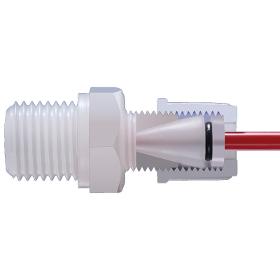
EM-TECHNIK GMBH
Germany
The 2M connector was developed for thin pipes such as capillary tubes with an outside diameter from 0.7 to 6.35 mm. It consists of a sealing cone which is pushed into the matching inner cone of the connector and acts as a bushing for the pipe while performing a sealing function. An additional O-ring, which is protected from damage by a pressure disc, holds the pipe in place and prevents it from being pulled out accidentally.
Request for a quote
SCHOLL APPARATEBAU GMBH & CO. KG
Germany
Heated, for plates and menu plates. Design: Casing and base made of chrome nickel steel, chromium steel plattform. Ther mos tat and on-off switch loosely attached, with built-in casing for mounting into site facing. Thermostatically adjustable from 30 – 90 °C. Capillary tube length 1800 mm. Capacity: approx. 50 plates. E.-Connection: 230 V-0,4 kW. Thermostat-built-in casing 107 x 175 x 80 mm, cut-out measures for built-in casing 87 x 150 mm.
Request for a quote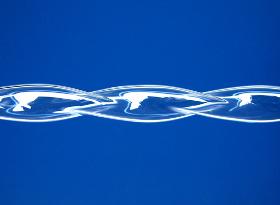
HILGENBERG GMBH
Germany
Twisted glass tubes and capillaries are produced simply by heating and twisting. By this means, the tubes obtain a large internal surface in relation to their length, enabling them to be used e.g. as cooling sections. Another application area is for ornamental and design articles.
Request for a quote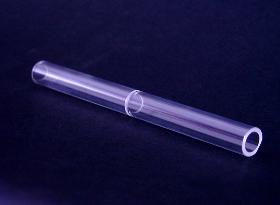
HILGENBERG GMBH
Germany
If required, we can supply capillaries and tubes with predetermined break points. For this purpose, the component is notched at the required breaking location. If the component is then subjected to a bending force, it will break at the notched point. To prevent unintended breakage, we recommend using medium or thick-walled tubes and capillaries.
Request for a quote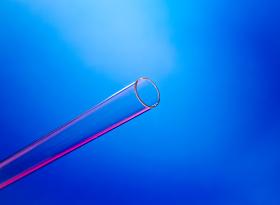
HILGENBERG GMBH
Germany
The distinctiveness of these capillaries is their very thin wall-thickness in relation to their diameter. The extremely thin walls lead to the special feature of these capillaries to be deformed easily. Additional features linked to the thin wall-thickness are minimal optical distortion as well as very low absorption for a wide range of radiation. This feature is used e.g. for the construction of optical measuring cells. Materials Soda-lime glass (AR, I860, PH360 etc.) Gamma sterilized soda-lime glass Borosilicate glass (DURAN©, PYREX©, SIMAX© etc.) Neutral glass (FIOLAX© and DUROBAX©) Aluminum silicate glass (Schott 8252/8253) Quartz glass (naturally melted quartz glass and synthetically produced quartz glass, incl. F300) Lead glass (lead content up to 28%) Sealing glasses for various metals such as: kovar, molybdenum, steel, silver, platinum, palladium Process of Production Like most of our capillaries the ultrathin capillaries are manufactured using the redrawing method....
Request for a quoteDo you sell or make similar products?
Sign up to europages and have your products listed

HILGENBERG GMBH
Germany
To cut capillary tubes, special blades are required, which are made of a material that is harder than glass. Normally, blades with an extremely hard diamond edge are used. However, zirconium oxide blades are a less expensive and convenient alternative. They are also very hard, and can be sharpened easily at any time by simple regrinding. These blades are excellently suited for cutting glass capillaries, as the flat blade can be drawn accurately across the glass surface. Moreover, the capillaries can be parted cleanly at the incision point. This method can even be used on extremely fine test tubes with wall thicknesses of only 0,01 mm. For convenient and secure use in one hand, the blades can be clamped into our aluminium blade holders. Therefore, we recommend requesting the blade holder as well. Glass cutting-tools
Request for a quote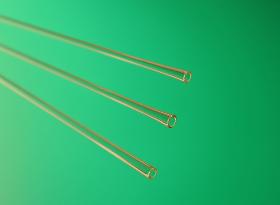
HILGENBERG GMBH
Germany
The major difference between our standard capillaries and conical capillaries lies in the different opening diameters on both ends. Whereas standard capillaries are manufactured with the redrawing-method conical capillaries are produced in a discontinuous process. Materials Soda-lime glass (AR, I860, PH360 etc.) gamma sterilized soda-lime glass Borosilicate glass (DURAN©, PYREX©, SIMAX© etc.) Neutral glass (FIOLAX© and DUROBAX©) Aluminum silicate glass (Schott 8252/8253) Lead glass (lead content up to 28%) Sealing glasses for various metals such as: kovar, molybdenum, steel, silver, platinum, palladium Process of Production During the production process of the conical capillaries a straight tube or capillary is heated and drawn. By drawing the capillary a pointy conical, tapered form, a so-called double-tip, is formed. The tip can be parted in the capillary’s smallest diameter and results in a larger diameter on one side which is determined by the blank used in the process, as...
Request for a quoteResults for
Capillary tubes - Import exportNumber of results
8 ProductsCompany type